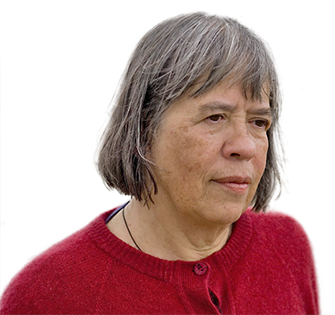Music
The Journey of Mataatua Whare — the house that came home
unstaged opera in 4 sections for soprano, baritone, bass, SATB chorus and orchestra, with video and images prepared by Tessa Petersen.
Text in Māori and English by the composer.
Mataatua was commissioned by Tessa Petersen and the Dunedin Symphony Orchestra for matariki 2025. The first public performance took place on 28 June 2025 in Dunedin Town Hall with Rebecca Ryan (soprano), Tomairangi Henare (baritone), Paul Whelan (bass) and the Dunedin Symphony Orchestra and chorus conducted by James Judd.
A private performance for Ngāti Awa was given by Opus Orchestra with the same soloists conducted by by Peter Walls in the Mataatua wharenui in Whakatane on 22 June.
About the work
This project was the vision Tessa Petersen, concertmaster of Dunedin Symphony Orchestra. Our collaboration involved extensive research, and consultation with iwi. We were honoured to have the wonderful support of Ngāti Awa, particularly that of Tā Hirini Moko Mead, and the South Island iwi Kaitahu, whose aroha surrounded Mataatua while it was in Ōtepoti Dunedin.
Mataatua tells the true story of the great wharenui Mataatua, built in Whakatane in1875 by Ngāti Awa. After a devastating period of war, land confiscations and contagious illnesses, the whare was built to recreate and honour the sacred ancestral figures that had been destroyed, and to encourage unity between the several iwi who had travelled to Aotearoa on Mataatua waka.
Against the will of the iwi, the house was ‘borrowed’ by the New Zealand government to be displayed in the Sydney International Exhibition, but the ownership of the house was soon lost sight of, and it travelled to Melbourne and London, where it spent 40 years in storage in the basement of the Victoria and Albert Museum. It returned to Dunedin in 1925 where it stood in Tūhura, the Otago Museum, for over 60 years before returning to Whakatane in 2011.
The tribulations Mataatua went through, being disassembled and rebuilt many times over the years, makes a very compelling and dramatic story. In the work, the baritone represents Te Ao Māori and is at times the voice of Ngāti Awa wordlessly lamenting the loss of their taonga. The bass represents the pākehā world assuming characters of a government official and a Waitangi tribunal judge, while the soprano represents the voice and the presence of Mataatua wharenui.
Instrumentation
Mataatua is scored for 2(doubling piccolo)222; 2211; harp, timpani, 2 percussion and strings.
Score
The score will be available from SOUNZ after the premiere performance.
Reviews
The Dunedin premiere was reviewed by Brenda Harwood for The Star.
History writ large in concert — Dunedin Symphony Orchestra
The Otago Daily Times published a review by Judy Bellingham.
Performances brilliantly crafted, balanced — Otago Daily Times

